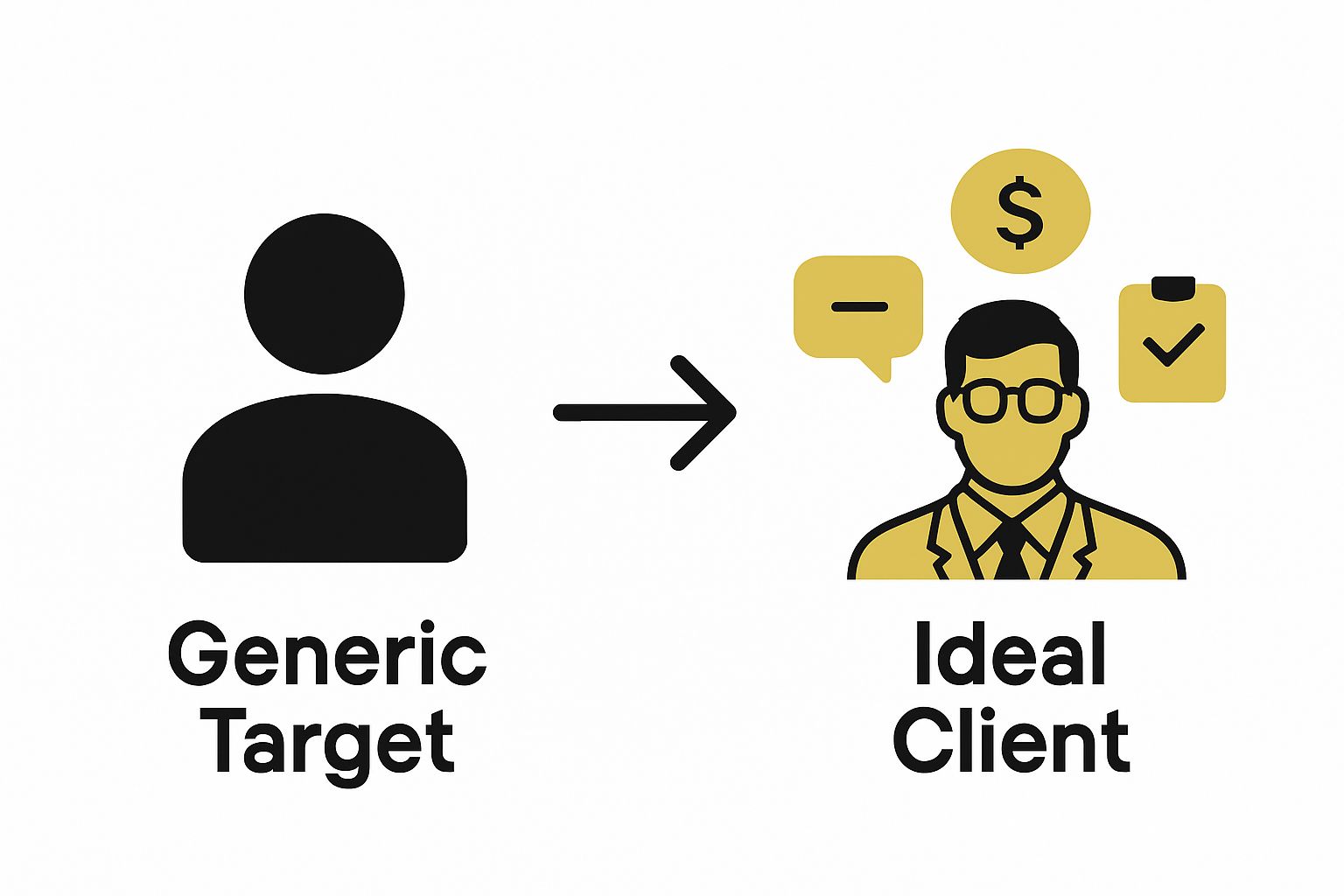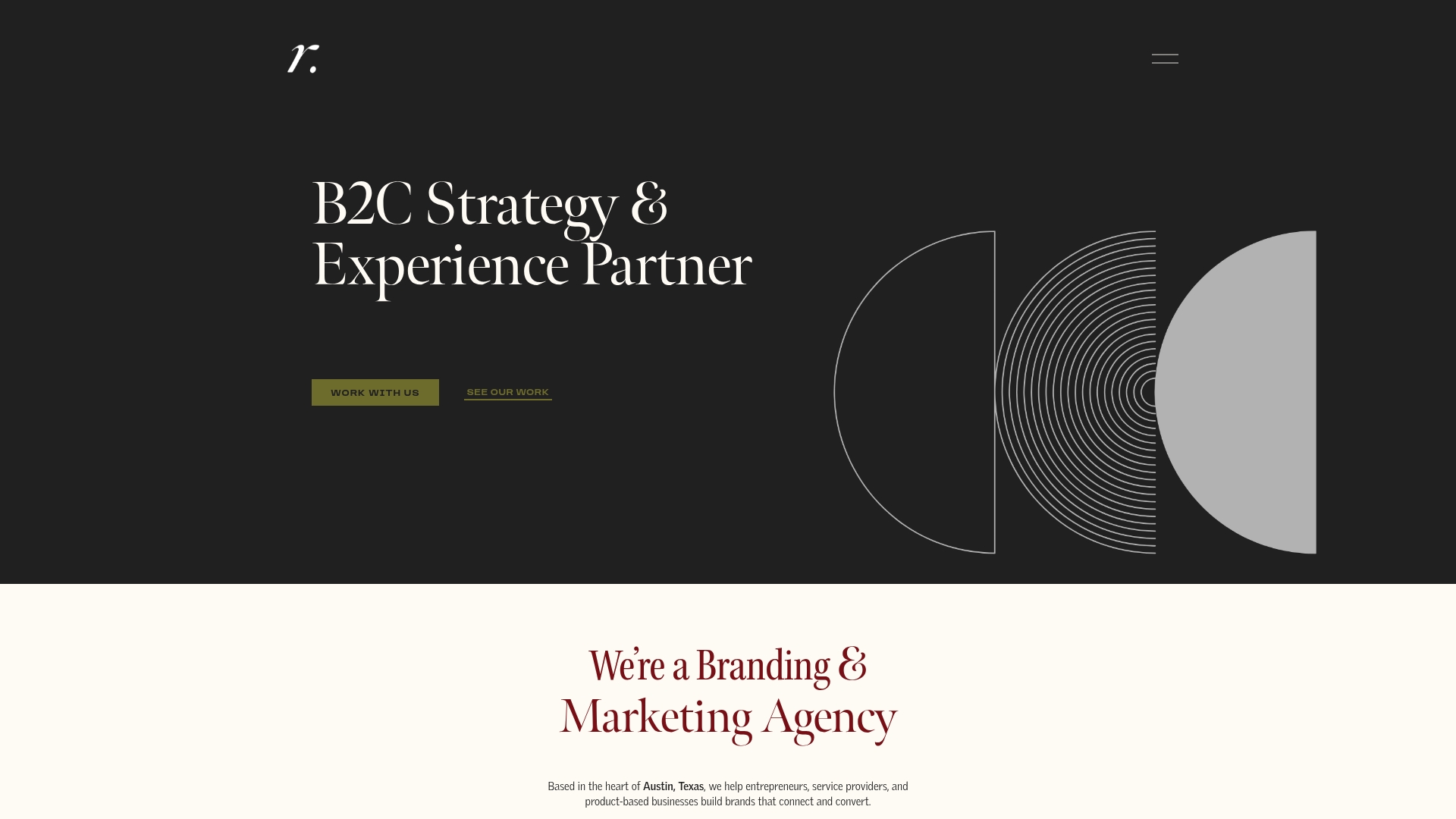How to Increase Brand Visibility with a Proven System

Learn how to develop brand identity step-by-step to enhance visibility, authority, and client acquisition in your business.

Building a memorable brand is more than just picking colors and a catchy name. Surprisingly, companies that define their core values early on see up to 60 percent higher client loyalty compared to those that skip this step. Most people get so caught up in logos and taglines they ignore the one thing that actually creates real connection: the story and strategy behind their brand identity.
Defining your brand values and vision is the foundational cornerstone of creating a powerful brand identity that attracts ideal clients. This critical step transforms your business from a mere service provider into a meaningful narrative that resonates deeply with your target audience.
Imagine your brand values as the internal compass that guides every strategic decision and communication. These aren’t just generic statements hanging on a wall—they’re the authentic expression of why your business exists and what makes it uniquely valuable. When entrepreneurs skip this fundamental stage, they often find themselves creating inconsistent messaging that fails to connect with potential clients.
To begin this process, start with deep self reflection. Ask yourself profound questions about your entrepreneurial journey: What problems do you genuinely want to solve? What personal experiences shaped your business mission? What change do you want to create in your clients’ lives or industries?
Consider mapping out your core values through a structured approach. Select 3-5 fundamental principles that represent the authentic heart of your business. These might include concepts like integrity, innovation, client transformation, continuous learning, or social responsibility. Each value should be more than a word—it needs to represent a meaningful commitment that guides your business practices.
Your brand vision acts as the north star, providing a clear picture of the long term impact you want to create. This isn’t about short term revenue goals, but the transformative journey you’re inviting clients to join. A compelling vision transcends transactional services and speaks to deeper aspirational outcomes.
Written articulation matters immensely. Craft your values and vision statements with clarity and emotional resonance. Avoid corporate jargon or generic language. Instead, use authentic, direct language that sounds like a genuine conversation. Your goal is to create statements that feel both inspirational and immediately understandable.
Verify your brand values and vision by asking: Does this statement genuinely reflect my passion? Would my ideal client feel emotionally connected to these principles? If the answer is yes, you’ve successfully completed this crucial first step in developing a magnetic brand identity.
Identifying your target audience and market position transforms your brand from a generic service into a precision instrument designed to connect with specific clients who genuinely need and value your work. This step bridges the gap between your brand values and the people who will most resonate with your mission.
Begin by creating a detailed client avatar that goes far beyond basic demographics. Think of this as developing a comprehensive psychological profile of your ideal client. What are their deepest professional challenges? What keeps them awake at night? What aspirations drive their business decisions? Understanding these nuanced emotional and professional landscapes allows you to craft messaging that feels like a direct, personal conversation.
Research becomes critical in this phase. Start by analyzing your existing client base—examine who has been most successful working with you, who generates the most meaningful results, and whose problems you solve most effectively. Look for patterns in their backgrounds, professional challenges, and personal motivations. These insights become the foundation of your target audience understanding.
Market positioning requires you to answer a fundamental question: How are you meaningfully different from others offering similar services? This isn’t about being better, but about being uniquely positioned to solve specific problems. Your positioning statement should articulate the distinctive value you provide, framed from the client’s perspective. Consider the intersection between your unique skills, your brand values, and the precise needs of your target audience.
Conducting competitive research helps refine your positioning. Examine other professionals in your space—not to copy them, but to identify gaps and opportunities. Where are they falling short? What client needs remain unaddressed? Your market position emerges from these strategic insights.
To verify you’ve successfully completed this step, ask yourself: Can I describe my ideal client so specifically that they would feel like I’m speaking directly to them? If you can articulate their challenges, aspirations, and the precise transformation you offer with clarity and empathy, you’ve successfully defined your target audience and market position.
 This clarity becomes the strategic foundation for all future brand communication and marketing efforts.
This clarity becomes the strategic foundation for all future brand communication and marketing efforts.
Creating a distinct brand name and logo is your visual and verbal first impression—the moment potential clients decide whether they want to learn more about your business. This step transforms your strategic groundwork into a tangible, memorable representation of your brand’s essence.
Your brand name should be a powerful linguistic embodiment of your brand values and market positioning. Avoid generic or overly descriptive names that blend into the background. Instead, craft a name that sparks curiosity, reflects your unique value proposition, and resonates with your target audience. Consider names that tell a story, evoke an emotion, or hint at the transformative experience you provide.
The brainstorming process requires creativity and strategic thinking. Start by listing words connected to your core values, the problems you solve, and the emotional journey you create for clients. Experiment with combinations, metaphors, and unexpected word pairings. Some entrepreneurs use personal origin stories or cultural references that add depth and memorability to their brand name.
Once you have potential names, conduct thorough research. Check domain availability, social media handles, and trademark databases to ensure your chosen name is unique and legally protectable. This prevents future rebranding headaches and establishes a solid digital foundation for your business.
Designing a logo requires an equally thoughtful approach. Your logo should be more than a pretty graphic—it needs to communicate your brand’s personality and values at a glance. Work with a professional designer who understands visual storytelling or use design platforms that offer strategic branding support. Choose colors, fonts, and visual elements that authentically represent your brand’s emotional tone—whether that’s professional and sophisticated, creative and playful, or bold and innovative.
Consider how your logo will appear across different mediums—websites, business cards, social media profiles, and marketing materials. It should be scalable, readable at different sizes, and work in both color and black and white contexts. Simplicity often trumps complexity; the most memorable logos communicate clearly and instantly.
To verify you’ve successfully completed this step, ask yourself: Does my brand name and logo immediately communicate who I am and what makes me unique? If potential clients can glimpse your visual identity and feel an immediate emotional connection or spark of curiosity, you’ve crafted a powerful brand representation.

Developing a consistent brand voice and messaging is about creating a communication strategy that feels authentic, distinctive, and powerfully aligned with your brand values. This step transforms your strategic foundations into a compelling narrative that speaks directly to your ideal clients.
Your brand voice is more than just words—it’s the personality that emerges through every interaction. Think of it as the unique way your brand communicates that differentiates you from competitors. Some brands are direct and professional, others are warm and conversational, while some are playful and innovative. The key is finding a voice that genuinely reflects your authentic self and resonates with your target audience.
Start by creating a brand voice guide that captures the nuanced elements of how you communicate. This isn’t a rigid script, but a flexible framework that ensures consistency across all platforms. Consider the emotional tone you want to convey—are you inspiring, practical, empathetic, or provocative? Examine how you naturally speak and write, then refine those communication patterns into a deliberate, strategic approach.
Mapping out your messaging requires deep understanding of your target audience’s language and aspirations. What words, phrases, and communication styles make them feel understood? How do they describe their challenges? Your messaging should mirror their internal dialogue, creating an instant sense of connection and trust. This goes beyond surface level communication—it’s about crafting language that makes potential clients feel like you genuinely understand their world.
Practical implementation means developing a consistent approach across all communication channels. Your website, social media, email communications, proposals, and client interactions should feel like they’re coming from the same authentic source. Create communication templates and guidelines that help you maintain this consistency, even as your business grows and evolves.
To truly master your brand voice, practice and refine continuously. Record yourself talking about your business, review your written materials, and ask trusted colleagues or clients for feedback. Does your communication feel genuine? Does it reflect the brand values and personality you want to project?
Verify you’ve successfully developed your brand voice by asking: If my brand could have a conversation with my ideal client, would it feel like a natural, trustworthy dialogue? When your messaging creates an immediate sense of understanding and connection, you’ve crafted a powerful brand communication strategy.
Implementing your brand across all channels transforms your carefully crafted brand strategy from a conceptual framework into a tangible, living experience for potential clients. This step ensures that every interaction with your business feels cohesive, intentional, and true to your brand’s core identity.
Your brand implementation is a holistic ecosystem that extends far beyond visual elements. It encompasses every touchpoint where clients might encounter your business—from your website and social media profiles to email communications, marketing materials, and even how you answer phone calls or conduct consultations. Each interaction should feel like a seamless extension of your brand’s personality and values.
Start by conducting a comprehensive brand audit of your existing channels. Examine your website, social media profiles, business cards, email signatures, and marketing collateral. Identify and eliminate any inconsistencies that might dilute your brand’s impact. This means aligning color schemes, typography, imagery, and tone of voice across all platforms. Your goal is to create a unified visual and communication experience that feels intentional and professional.
Digital platforms require special attention. Your website should be more than a digital brochure—it needs to be a strategic storytelling tool that immediately communicates your brand’s unique value. Ensure your visual design, messaging, and user experience reflect the brand personality you’ve developed. Integrate your brand voice into website copy, about pages, service descriptions, and client testimonials.
Social media channels offer powerful opportunities to showcase your brand’s authentic personality. Develop a content strategy that goes beyond generic posting. Each piece of content should reinforce your brand values, demonstrate your expertise, and connect emotionally with your target audience. Use consistent visual templates, color palettes, and communication styles that make your content instantly recognizable.
Professional communication channels like proposals, contracts, and client onboarding materials are often overlooked brand touchpoints. Customize these documents to reflect your brand’s visual identity and communication style. This attention to detail signals professionalism and creates a cohesive brand experience from first contact through ongoing collaboration.
To verify you’ve successfully implemented your brand, ask yourself: Would a potential client experience the same emotional connection and understanding of my brand whether they encounter me on Instagram, my website, or during a discovery call? When your brand feels consistently authentic across all channels, you’ve created a powerful, magnetic brand presence.
Below is a checklist table summarizing key verification criteria for each brand identity development step to help you confirm successful completion and maintain consistency throughout the process.
| Step | Completion Check Question | What to Look For |
|---|---|---|
| Define Values and Vision | Does this statement genuinely reflect my passion? Would my ideal client feel emotionally connected? | Authentic, emotionally resonant statements |
| Identify Target Audience & Position | Can I describe my ideal client so specifically that they feel I am speaking directly to them? | Clarity, empathy, client-focused messaging |
| Create Brand Name and Logo | Does my brand name and logo immediately communicate who I am and what makes me unique? | Instant recognition, emotional connection |
| Develop Brand Voice and Messaging | If my brand could have a conversation with my ideal client, would it feel natural and trustworthy? | Consistent, authentic, audience-aligned voice |
| Implement Across All Channels | Would a potential client experience the same connection across all channels, from website to discovery? | Unified look, feel, and messaging everywhere |
| Evaluate and Refine | If my brand could have an honest conversation with me, what would it suggest changing for more impact? | Openness to evolve, data-backed improvements |
Evaluating and refining your brand identity is an ongoing process of strategic introspection and external validation. This critical step transforms your brand from a static concept into a dynamic, responsive entity that grows alongside your business and client needs.
Brand evaluation is not a one time event, but a continuous dialogue between your vision and market reality. Begin by establishing clear metrics and feedback mechanisms that provide meaningful insights into your brand’s performance. These might include client surveys, engagement rates on digital platforms, conversion metrics, and qualitative feedback from your target audience.
Collect comprehensive data from multiple sources to create a holistic understanding of your brand’s perception. Engage directly with clients through structured interviews and anonymous feedback forms. Ask penetrating questions about their experience with your brand—what resonates, what feels authentic, and where potential disconnections exist. This raw, unfiltered input becomes your most valuable refinement tool.
Analyze your competitive landscape regularly to understand how your brand positioning evolves. Market dynamics shift continuously, and what differentiated your brand yesterday might become standard tomorrow. Stay curious and adaptable, watching for emerging trends and client expectations that could inform strategic brand adjustments.
Technological and communication platforms change rapidly, which means your brand must remain flexible. Review your visual identity, messaging, and communication channels annually. Consider whether your current brand representation truly reflects your business’s growth, expertise, and evolving client needs. Sometimes subtle refinements—a color palette update, messaging tone adjustment, or visual design evolution—can dramatically enhance your brand’s relevance and appeal.
Emotional intelligence plays a crucial role in brand refinement. Beyond metrics, assess how your brand makes people feel. Does your communication inspire trust? Does your visual identity evoke the intended emotional response? Brands that connect on an emotional level transcend transactional relationships and build lasting client loyalty.
To verify you’ve successfully evaluated and refined your brand, ask yourself: If my brand could have an honest conversation with me, what would it suggest changing to become more authentic and impactful? When you can answer this question with clarity and strategic insight, you’ve mastered the art of continuous brand evolution.
If you’ve read our guide on developing brand identity, you already know the struggle of connecting your deeper business values to actual client attraction. You want messaging that feels authentic, an identity that really stands out, and systems that cut the guesswork from your growth. But turning those ideas into results is tough when you are navigating alone. Too many entrepreneurs end up stuck in a loop of generic visuals, unclear positioning, and scattered messaging. You do not have to go through another round of guesswork or waste time on strategies that do not fit where your business is right now.

Step out of uncertainty and start building a brand foundation that truly resonates. Reasonate Studio works with small businesses to define crystal-clear values, position you for your ideal audience, and create memorable identities that build real trust. Explore how The Aligned Impact Model™ brings clarity and confidence to your marketing so you stop blending in and finally start attracting the right clients. Ready to see what this looks like for your brand? Visit our main site today to get started on your transformation.
Brand values are the fundamental principles that guide a business’s actions and decisions. They are crucial because they form the foundation of a brand’s identity, helping to connect with potential clients on an emotional level and ensuring consistent messaging.
To identify your target audience, create a detailed client avatar that includes their professional challenges, goals, and motivations. Analyze your existing client base to find patterns and use this information to craft messaging that resonates with your ideal clients.
When creating a brand name, ensure it reflects your brand values, is unique, and resonates with your target audience. A good brand name should evoke curiosity and communicate your unique value proposition without being generic or overly descriptive.
Implement your brand identity by ensuring consistency in visual elements, messaging, and tone of voice across all channels, including your website, social media, and marketing materials. Conduct a brand audit to eliminate inconsistencies and create a cohesive experience for potential clients.